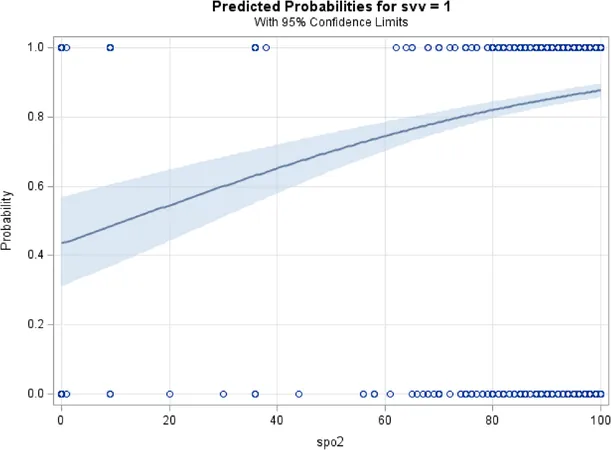
The Importance of Oxygen Saturation in Traumatic Brain Injury Patients: Unraveling the LINK to Better Survival
2025-06-17
Author: Wei Ling
Understanding the Impact of Oxygen Saturation on TBI Outcomes
In critical situations like traumatic brain injury (TBI), every second counts. Recent research has revealed a striking connection between prehospital oxygen saturation (SpO2) levels and survival outcomes for hypotensive patients suffering from TBI. A study analyzing over 1,200 trauma patients across Asia highlights how vital maintaining adequate oxygen levels can be in ensuring better recovery.
What the Study Found
Conducted between November 2015 and December 2022, this substantial research effort classified the patients based on their SpO2 readings into three groups: normoxia (≥94%), moderate hypoxia (80-93%), and severe hypoxia (<80%). The results were astonishing. Among the patients, 92.5% with normoxia survived to discharge, in stark contrast to just 52.6% in the severe hypoxia category. This demonstrates a critical link—higher oxygen saturation translates fundamentally to better survival rates.
Breaking Down the Numbers
Of the 1,210 patients studied, a whopping 64.2% maintained normoxia, while 26.4% showed moderate hypoxia, and 9.4% faced severe hypoxia. As the oxygen saturation decreased, so did survival rates and favorable neurological outcomes, underscoring the crucial role of oxygenation in recovery.
Why Oxygen Saturation Matters So Much
Traumatic brain injury is responsible for about 55 million casualties worldwide each year, a staggering statistic that groups it among the leading causes of death and disability globally. Factors like oxygenation and blood pressure are vital for sufficient brain tissue oxygen delivery. When either factor falters, patients face increased risks of secondary brain injury, potentially leading to dire irreversible damage or death.
The Guidelines and What They Mean for Patients
Current guidelines suggest maintaining an SpO2 level of at least 94% to minimize the risk of worsened outcomes in severe TBI cases. However, this study suggests that higher saturation levels should be prioritized to significantly improve discharge survival rates—sparking a potential shift in clinical practice.
The Potential for Change in Medical Protocols
This study's findings could lead to a re-evaluation of existing protocols for the management of TBI patients, particularly in prehospital settings. With evidence suggesting that even a 1% increase in oxygen saturation can enhance survival chances, medical professionals may need to focus even more on rapid response to hypoxia.
Final Thoughts: A Call for Continuous Monitoring
As research continues to underscore the critical relationship between oxygen saturation and survival in TBI patients, ongoing advancements in monitoring and intervention strategies will be vital. Ensuring adequate oxygen levels could not only save lives but also enhance recovery, emphasizing the need for personalized, timely care in emergency settings.

 Brasil (PT)
Brasil (PT)
 Canada (EN)
Canada (EN)
 Chile (ES)
Chile (ES)
 Česko (CS)
Česko (CS)
 대한민국 (KO)
대한민국 (KO)
 España (ES)
España (ES)
 France (FR)
France (FR)
 Hong Kong (EN)
Hong Kong (EN)
 Italia (IT)
Italia (IT)
 日本 (JA)
日本 (JA)
 Magyarország (HU)
Magyarország (HU)
 Norge (NO)
Norge (NO)
 Polska (PL)
Polska (PL)
 Schweiz (DE)
Schweiz (DE)
 Singapore (EN)
Singapore (EN)
 Sverige (SV)
Sverige (SV)
 Suomi (FI)
Suomi (FI)
 Türkiye (TR)
Türkiye (TR)
 الإمارات العربية المتحدة (AR)
الإمارات العربية المتحدة (AR)